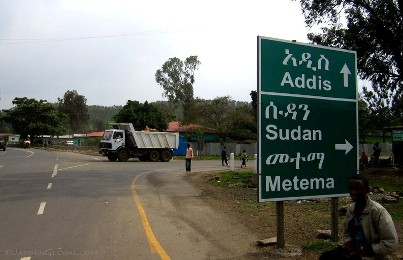Sudan, Ethiopia to complete border demarcation this year
January 17, 2016 (KHARTOUM) – The technical committee tasked with redrawing the border between Sudan and Ethiopia said it would complete its work on the ground during this year.

The head of the technical committee Abdalla al-Sadig told the semi-official Sudan Media Center (SMC) that the border demarcation between Sudan and Ethiopia doesn’t face any problems.
He pointed out that the length of the border with Ethiopia is about 725 km, saying the process of demarcation is proceeding properly.
Farmers from two sides of the border between Sudan and Ethiopia used to dispute the ownership of land in the Al-Fashaga area located in the south-eastern part of Sudan’s eastern state of Gedaref.
Al-Fashaga covers an area of about 250 square kilometers and it has about 600.000 acres of fertile lands. Also there are river systems flowing across the area including Atbara, Setait and Baslam rivers.
On Saturday, Sudan’s foreign minister Ibrahim Ghandour told the Qatar-based Aljazeera TV that Sudan and Ethiopia are working together to curb the activities of Ethiopian gangs inside Sudanese territory.
He stressed that Al-Fashaga is a Sudanese territory, saying the government allowed Ethiopia farmers to cultivate its land as part of the cooperation between the two countries.
“However, Ethiopia is committed and acknowledges that [Al-Fashaga] is a Sudanese territory,” he said.
Ghandour pointed to joint meetings between the two countries at the level of the presidency to discuss borders issues.
Sudan’s Gadarif and Blue Nile states border Ethiopia’s Amhara region. The borders between Sudan and Ethiopia were drawn by the British and Italian colonisers in 1908.
The two governments have agreed in the past to redraw the borders, and to promote joint projects between people from both sides for the benefit of local population.
However, the Ethiopian opposition accuses the ruling party of abandoning Ethiopian territory to Sudan.
DISPUTE OVER HALAYEB
Regarding the dispute with Egypt over Halayeb triangle, al-Sadig said Khartoum has documents clearly proving that the area is a Sudanese territory.
He pointed that Sudan has not engaged in meetings with the Egyptian side on Halayeb, saying the issue could be referred to international arbitration as was the case during the dispute between Egypt and Israel over Taba area.
“We don’t oppose [referral of the case to the] international arbitration to resolve the issue particularly as Sudan has maps as well as legal and historical documents proving that Halayeb and Shalateen are part of the Sudanese territory,” he said.
The Halayeb triangle overlooks the Red Sea and has been a contentious issue between Egypt and Sudan since 1958, shortly after Sudan gained independence from British-Egyptian rule.
The contested border area has been under de facto Egyptian administration since the mid-1990s, but both countries have jockeyed for its control for over a century.
Egypt brushed aside Sudan’s repeated calls for referring the dispute to international arbitration.
Earlier this month, Sudan’s foreign minister Ibrahim Ghandour told a group of Egyptian politicians in Cairo that the dispute over Halayeb area can’t be resolved by “imposing a fait accompli” but through dialogue or by referring the case to the concerned international institutions.
(ST)
